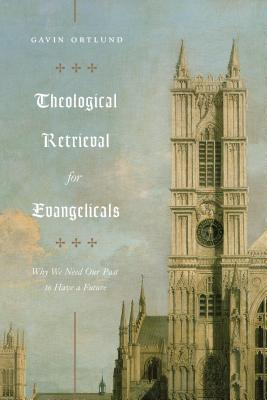Amid the tumult of our times, a lot of people have been looking for answers. Among Christians, one of the ways that has manifested itself is a search for rootedness, or solid foundations. And because evangelical Protestants are often ignorant of the roots of their tradition, or have been taught to be suspicious of any appeals to tradition and history, they are primed for the idea that all of this – their upbringing – has been wrong and that what they really need is the oldest church with the strongest claim to have preserved the unbroken practice of the early church. I’m sympathetic to that impulse.

Another related challenge is the transition to adulthood. This is true for believers of all stripes and traditions, since integrating one’s life into the structures and institutions of this world does not encourage faith but undermines it. I think it’s worth thinking about why that is.
It’s only natural that we adopt the beliefs of our parents as we grow. This state of affairs typically enjoys a phase of equilibrium until adolescence or early adulthood. Growing minds and widening spheres of life experience cause us to rub shoulders with all kinds of people who hold all kinds of different beliefs. This experience can be destabilizing; we encounter people who believe that what we believe is utter nonsense. And who’s to say they’re not right and we’re not wrong?
It’s worth mentioning that this is largely a modern phenomenon. In premodern times there was usually a consensus of beliefs within one’s village or town, with perhaps a few exceptions – eccentrics, weirdos, outcasts. But nothing like the cosmopolitan culture of today where every religion and every shocking variation of no religion can be seen walking the streets of any mid-size town.
Sociologist Peter Berger speaks of plausibility structures as a way to understand how one’s social environment contributes to certain beliefs, not by argument, but by making them look reasonable and respectable. In a homogeneous society, the structures of belief are extremely strong and rigid – all the people in one’s life basically share the same worldview. In such contexts it takes courage, imagination, and a fiercely independent spirit to dissent from the rigid consensus. Dissenters are then met with a wide variety of social pressures aimed at discouraging such non-conformity. Examples of this would be pre-reformation medieval towns or current-day middle-eastern Muslim societies.
Families and church communities have their own sets of plausibility structures, but when nested within a larger secular culture, that framework of shared beliefs and relationships is far less robust. Going to public high school, university, or getting one’s first job plunges a person into a pot pourri of different beliefs, philosophies, and lifestyles. For many growing up in the church, the experience of this plunge is bewildering. They are simply not equipped to process it. They hear compelling arguments from authority figures like competent teachers or successful bosses that undermine Christianity’s claims.
But more subversive than the arguments themselves are the subtle workings of other dynamics: the social pressures that play on our desires to be liked, included, and accepted. To be thought clever, right-thinking, and on the correct side of important issues.
Under these kinds of pressures, it is quite easy for a faith that isn’t deeply rooted to wither away. My own experience has taught me that theological and historical retrieval can serve as a kind of inoculation to these forces. That brings me to the work of Gavin Ortlund, and specifically his book Theological Retrieval for Evangelicals as well as his thoughtful and substantive video content on his YouTube channel, Truth Unites.
Gavin’s strengths are his academic rigor, his irenic demeanour, and the depth of his familiarity with the primary sources of church history, including Roman Catholicism and Orthodoxy. And for bonus points, he regularly interacts with the work of C.S. Lewis.
Speaking of Lewis, I often think of this memorable passage from Screwtape Letters when pondering this issue:
One of our great allies at present is the Church itself. Do not misunderstand me. I do not mean the Church as we see her spread out through all time and space and rooted in eternity, terrible as an army with banners. That, I confess, is a spectacle which makes our boldest tempters uneasy. But fortunately it is quite invisible to these humans. All your patient sees is the half-finished, sham Gothic erection on the new building estate.
When he goes inside, he sees the local grocer with rather an oily expression on his face bustling up to offer him one shiny little book containing a liturgy which neither of them understands, and one shabby little book containing corrupt texts of a number of religious lyrics, mostly bad, and in very small print. When he gets to his pew and looks round him he sees just that selection of his neighbours whom he has hitherto avoided.
You want to lean pretty heavily on those neighbours. Make his mind flit to and fro between an expression like “the body of Christ” and the actual faces in the next pew. It matters very little, of course, what kind of people that next pew really contains. You may know one of them to be a great warrior on the Enemy’s side. No matter. Your patient, thanks to Our Father below, is a fool. Provided that any of those neighbours sing out of tune, or have boots that squeak, or double chins, or odd clothes, the patient will quite easily believe that their religion must therefore be somehow ridiculous.
Screwtape Letters, chapter 2.
Notice the inadvertent revelation that the Church is glorious and rooted in eternity. Every true church is in some way connected to that vital reality. But the enemy works hard to set up plausibility structures such that the humdrum and all-too-human quality of any one local church can seem “somehow ridiculous.” Surely this cannot be the Church, the vehicle of God’s plan for the world. But here is a beautiful thing we should be reminding our congregations of regularly: that this little local church is in spiritual continuity and communion with the great stream of Christianity flowing directly from the apostolic headwaters all those centuries ago.
So if you find yourself among the growing number of evangelicals troubled by the lack of historical rootedness in your tradition, dissatisfied by the shallowness of the faith that was passed on to you through your upbringing in Sunday school and youth groups, and hungering for a faith that has a tangible connection to that unbroken string of believers joining us to the first disciples, then I commend to you the work of Gavin Ortlund.
He has shown himself to be a worthy guide for introducing evangelicals and Protestants to the ways in which the Christian past can inform and deepen our faith. He has also done excellent work engaging with the claims of those branches of the Christian tree which most often attract disaffected evangelicals: Roman Catholicism and Eastern Orthodoxy. This engagement has been mostly on his YouTube channel, but it connects to the book on a number of levels.
The book itself is written at a fairly high academic level, with copious footnotes and robust engagement with academic journal articles and books. The book also ranges from extremely readable to quite challenging at points, using rarified theological language without bothering to explain and define terms. I’ve taken theological courses at a college level and am generally quite conversant with that world but I admit I had to google at least one term for which I was drawing a blank: perichoresis. Beyond the sometimes technical language, it can be mentally taxing to wrap one’s mind around the way that medieval or patristic Christians thought. Gavin does a good job guiding the modern reader across that conceptual gap but it is demanding nonetheless. The flip side of that effort as a reader is the reward of really grasping a foreign way of thinking. For example, I really enjoyed it when I finally started to grasp how the medievals understood God as being outside of time. Maybe understood is too strong a term, but I grasped something that had previously escaped me.
The most useful parts of the book for me were the introduction, the chapter on atonement, and the engagement with Gregory’s work on pastoral practice. The atonement discussion, for me at least, alone was worth the price of the book. Very helpful and edifying. Gavin’s YouTube content is more approachable and less academic than the book. He speaks to a popular audience but still makes regular use of primary sources when making his points. I don’t always agree with him, but he works hard to engage opponents in ways that I think demonstrate a good faith approach.
In conclusion, I think the book – Theological Retrieval for Evangelicals – as well as his increasingly popular YouTube channel, are both profoundly helpful to the evangelical Protestant church. There are large swaths of evangelicals who are not struggling with the kinds of questions this book seeks to address. But for those who are, I believe it could be paradigm-shifting. And if my reading of the cultural moment is correct, the number of people asking these kinds of questions will only be increasing for years to come.

